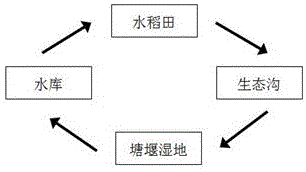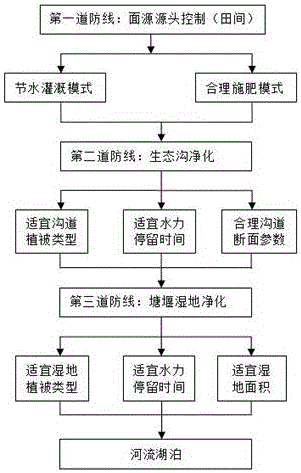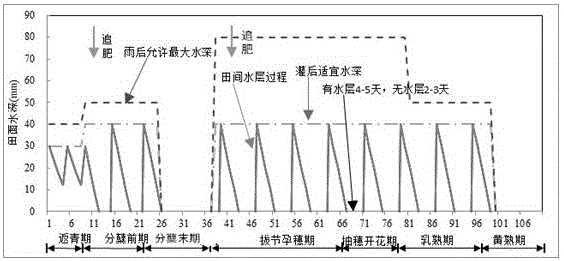A method for ecological control of agricultural non-point source pollution in rice planting areas
A technology for agricultural non-point source pollution and ecological control, applied in the field of agricultural water conservancy, can solve the problems of short water flow paths, unreasonably controlled buildings, unfavorable growth of animals and plants, etc., and achieve the effect of reducing harm.
- Summary
- Abstract
- Description
- Claims
- Application Information
AI Technical Summary
Problems solved by technology
Method used
Image
Examples
Embodiment 1
[0061] An ecological control method for agricultural non-point source pollution in a rice planting area, specifically as follows:
[0062] A. The demonstration area with an area of 10,000 mu is divided into 10 blocks, and the ponds, weirs and ecological ditches in the entire demonstration area are treated and ecologically restored in sections. The technical process and the overall process are respectively shown in figure 1 with figure 2 .
[0063] B. The first line of defense: From the perspective of high rice yield, carry out source control of water-saving irrigation and rational fertilization, that is, the comprehensive control method of water and fertilizer. The specific methods are as follows image 3 shown. Paddy fields are irrigated intermittently, maintaining a water layer of 10-40mm during the rice turning green stage, drying the field for 3-7 days at the end of tillering stage, and drying naturally at the yellow ripening stage; in other stages, the depth of the ...
PUM
 Login to View More
Login to View More Abstract
Description
Claims
Application Information
 Login to View More
Login to View More - R&D
- Intellectual Property
- Life Sciences
- Materials
- Tech Scout
- Unparalleled Data Quality
- Higher Quality Content
- 60% Fewer Hallucinations
Browse by: Latest US Patents, China's latest patents, Technical Efficacy Thesaurus, Application Domain, Technology Topic, Popular Technical Reports.
© 2025 PatSnap. All rights reserved.Legal|Privacy policy|Modern Slavery Act Transparency Statement|Sitemap|About US| Contact US: help@patsnap.com



